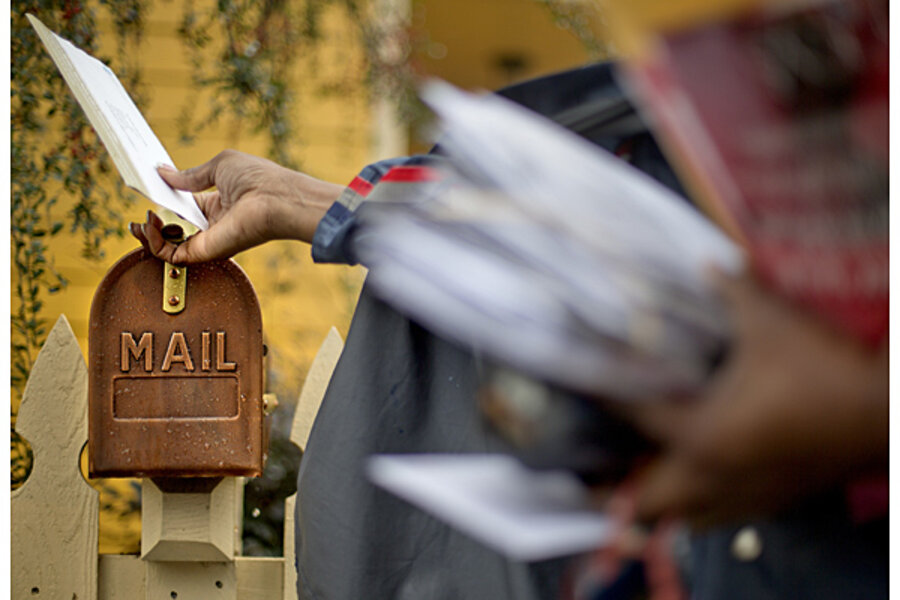Postal Service rate hike could mean 49-cent stamps
Loading...
| Washington
It soon could cost 49 cents to mail a letter.
The postal Board of Governors said Wednesday it wants to raise the Postal Service rate of a first-class stamp by 3 cents, citing the agency's "precarious financial condition" and the uncertain prospects for postal overhaul legislation in Congress.
"Of the options currently available to the Postal Service to align costs and revenues, increasing postage prices is a last resort that reflects extreme financial challenges," board chairman Mickey Barnett wrote customers.
The rate proposal must be approved by the independent Postal Regulatory Commission. If the commission accepts it, the increase would become effective Jan. 26.
Under federal law the post office cannot raise its prices more than the rate of inflation unless it gets approval from the commission. In seeking the increase, Barnett cited "extraordinary and exceptional circumstances which have contributed to continued financial losses" by the agency.
As part of the rate increase request, the cost for each additional ounce of first-class mail would increase a penny to 21 cents while the price of mailing a postcard would rise by a cent, to 34 cents. The cost to mail a letter to an international destination would jump 5 cents to $1.15.
Many consumers won't feel the increase immediately. Forever stamps bought before an increase still would cover first-class postage. The price of new forever stamps would be at the higher rate, if approved.
The Postal Service also said it would ask for adjustment to bulk mail and package rates in a filing with the commission Thursday. No details were immediately provided.
Media and marketing businesses say a big increase in rates could hurt them and lower postal volume and revenues.
The post office expects to lose $6 billion this year and is seeking help from Congress to fix its finances.
Barnett said the increase, if approved, would generate $2 billion annually in revenue for his agency.
The agency last raised postage rates on Jan. 27, including a penny increase in the cost of first-class mail to 46 cents.
Congress is considering cost-cutting moves that include ending Saturday mail delivery and most door-to-door delivery. The agency says ending Saturday mail delivery would save $2 billion each year. But many lawmakers, along with postal worker unions, have resisted such changes, saying they would inconvenience customers.
The Postal Service supports the proposed delivery changes. It also is seeking to reduce its $5.6 billion annual payment for future retiree health benefits. It missed two of those $5.6 billion payments last year, one deferred from the previous year, and is expected to miss another at the end of this month when its fiscal year ends.
Postmaster General Patrick Donahoe was to appear before a Senate panel on Thursday to press lawmakers for swift action on legislation to fix his agency's finances.
Donahue has said that without help from Congress, the agency expects its multibillion-dollar annual losses to worsen. He has warned that the agency's cash liquidity remains dangerously low.
The Postal Service is an independent agency that receives no tax dollars for its day-to-day operations but is subject to congressional control.







